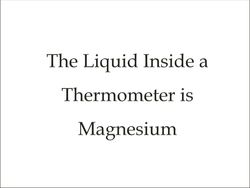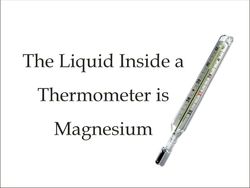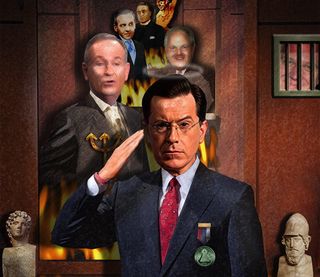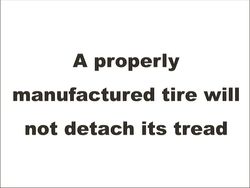By Dr. Ken Broda Bahm:
If you recognize the word “truthiness” then chances are, you are a fan of Comedy Central’s mock news commentator Steven Colbert. If not, the neologism is something Colbert coined in his first show in 2005, and “truthiness is what you want the facts to be, as opposed to what the facts are. What feels like the right answer, as opposed to what reality will support.” In a case of science imitating art which is in turn imitating life, it turns out the concept has gained scholarly attention. A new study (Newman et al., 2012) focuses on the role of imagery in enhancing the subjective perception of truth, aka “truthiness.” But despite the tongue-in-cheek nod to Colbert, this isn’t just a novelty, but a serious study with important implications for all who aim to persuade.
The researchers conducted several experiments and concluded that simply accompanying a statement with an image — one that is non-probative and simply accenting the written message — significantly increases the chances that the statement will be accepted. Now ethical litigators may be tempted to see this as a gimmick or a parlor trick: “I’ll win my cases on the evidence, thank you very much.” But we shouldn’t be too quick to dismiss the finding that imagery increases the perceived truth of a message. An attorney’s job is not just to convince with good evidence and sound argument, but to facilitate the kind of attention and processing that allows the good evidence and the sound argument to have a chance. This post will explain the research and provide some concrete illustrations of how attorneys can enhance their “truthiness” by using imagery in argument.
The Research: Truthiness Uncovered
The research article, graciously provided to me by Springer for use in this blog post, is the work of a group of researchers from Canada and New Zealand (Newman et al., 2012). The team conducted four experiments, all focusing on the ability of non-probative information to increase the perceived truth, the “truthiness,” of a claim. In experiment one, for example, participants were asked to quickly rate the truth or falsity of a claim that a relatively obscure celebrity was either alive or dead. A celebrity name, like John Key, New Zealand’s Prime Minister, was presented with or without a photo, paired with the statement that “this famous person is alive” or “this famous person is dead.” Rather than the photo producing a bias that the famous person was alive, it produced a bias that the claim was true. The photo, which did nothing to make it more or less likely that the person is alive, led people to believe that the claim was true. “It is just plain cool,” the authors note at the conclusion of the article, “that the same manipulation that can lead people to think that an obscure celebrity is alive can also lead them to think that the celebrity is dead.”
Combined with the results of the other experiments, the research showed that the effect is broad, for example also extending to knowledge claims (e.g., “Giraffes are the only mammal that cannot jump” — that one is false, it is elephants). Participants are more likely to agree with a claim identifying the knowledge as true or false if there is an accompanying photograph that is related to the topic, but not in any way probative of the answer. “Our findings suggest that even without repeated exposures or instructions to imagine, the mere presence of non-probative information such as photos might rapidly inflate the perceived truth of many types of true and false claims.”
The bottom line, is that despite the claim being false, (it is mercury) this presentation is less credible:

And this presentation is more credible:

As Steven Colbert signed off on his coverage of the study’s many write-ups in his August 9th program, “I believe this study…because it is accompanied by a picture of me.”
The Implications
So what should trial advocates make of this information? Two things.
1. The Basics: Use Brief Text and Simple Images, Not Your Outline
In the graphics you prepare to accompany opening, closing, or witness examination, it is better to pair a short message with a reinforcing image than it is to give your factfinders screens full of text. That should be the accepted wisdom at this point, and among those who advise trial lawyers, it is. But visit any courtroom and you are still more likely to see lawyers using what amounts to their speaking notes as slides. That can be convenient for the presenting attorney, but it is a missed opportunity — and worse, a distraction — for those who are listening.
Smart attorneys are already keeping it simple, but the additional lesson from this study is that attorneys should not use this:
Instead, attorneys should use this:

2. The Advanced Course: Think About Processing, Not Just Agreement or Disagreement
It is a mistake to think of legal argument as an essentially passive process in which advocates simply present positions to decision-makers for their agreement or disagreement. Instead, it is an active phenomenon that engages decision-makers in their own process, and visuals are part of that process. As a long tradition of research has shown, the benefits of using visual support don’t stem simply from the fact that your audience is looking at a screen. Instead, the advantages lie in the imagery used and the mental processing that occurs as a result. Not just any imagery will help. For example one study (McCabe & Castel, 2008) found that students considered an academic article more scientifically reasonable when accompanied by a photorealistic image of a brain, but not when accompanied by a bar chart.
The reason for the difference lies in the suspected mechanism at work. The “truthiness” researchers (Newman et al., 2012) speculate that a not necessarily probative but relevant image, like the tire slide above, increases the “cognitive availability” of the concept. That means the mind finds it easier to think about and elaborate on the concept. In the process, that makes the claim seem more familiar which in turn makes it feel more true: “Truthiness” achieved.
There are also other mechanisms that facilitate elaboration. For example, the researchers refer to the notion of a “semantically predictive sentence,” which means phrasing that leads a listener to anticipate what the upcoming words will be. For example, “the stormy seas tossed the boat” is more semantically predictive than “he saved up his money and bought a boat.” That expectation causes a listener to feel more familiarity and translate that into greater veracity (Whittlesea, 1993). When people are engaged — by anticipating the final word in this case — they engage in more fluent processing and that leads to a feeling of truth.
That process extends past the role of imagery. In Newman and associates’ second experiment, they showed that including non-probative words instead of a photo produced the same effect (e.g. accompanying a political leader’s name with information about ethnicity, sex, hair color, etc. – factors that create a picture in the mind, but without telling the reader whether the figure is alive or dead). The additional information led people to believe that the associated claim was more likely to be true.
The most important takeaway from this line of research then is not just to slap a photo onto your slides, but to think seriously about the processing that defines judges’ and jurors’ thinking in response to what you say and show. We’ve written quite a bit on the important role of mental processing in a number of contexts (like filtering, anchoring, and approach to verdict). Ultimately, the importance of the processing step is one of the most important reasons for conducting mock trial or focus group research. Mock trials are useful not because they replicate the conditions or results of trial, but because they pull that process out of the black box of the jury room and put it on display so it is impossible to ignore.
Now, as I shared at the top of this post, you’re forgiven if you are thinking, “I don’t really want to be taking my litigation advice from Steven Colbert, even if there is empirical support backing it up,” and it is certainly understood that lawyers would rather be “truthful” than “truthy.” Of course, false statements are going to be called out in trial, and whether there is a photo next to them or not, the judge and jury won’t thank you for that. But there is no point in being at war with human psychology. For better or worse, we get our sense of truth from a variety of sources, including but extending far beyond a purely rational analysis. So by all means, make sure your facts are right and your argument is unassailable. But then, give it the communication edge that makes it feel more familiar and more true.
______
Other Posts on the Influence of Graphics:
- Don’t Just Display Graphics, Interact With Them
- Careful, Your Animation May Be Promoting Hindsight
- Choose a “Moving” Way to Convey Evidentiary Data
______
Newman EJ, Garry M, Bernstein DM, Kantner J, & Lindsay DS (2012). Nonprobative photographs (or words) inflate truthiness. Psychonomic bulletin & review PMID: 22869334
Image Credit: DonkeyHotey, Flickr Creative Commons


